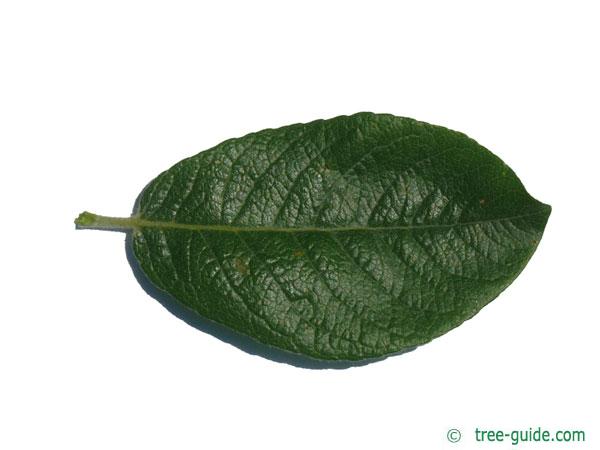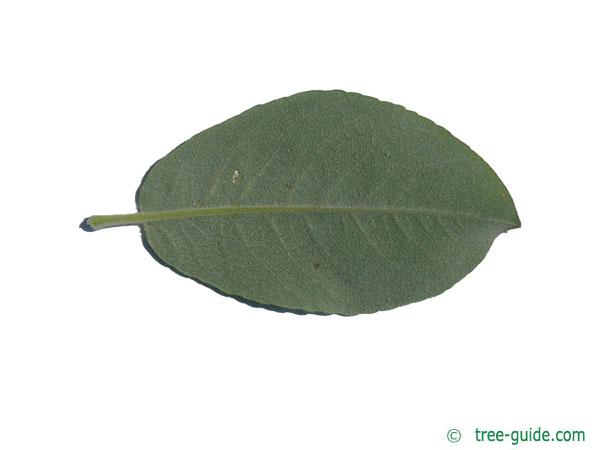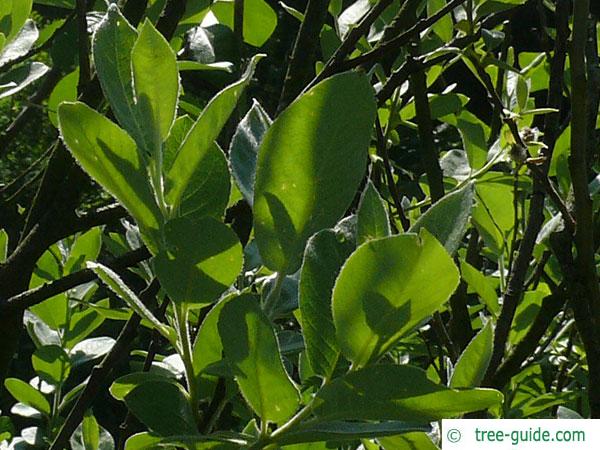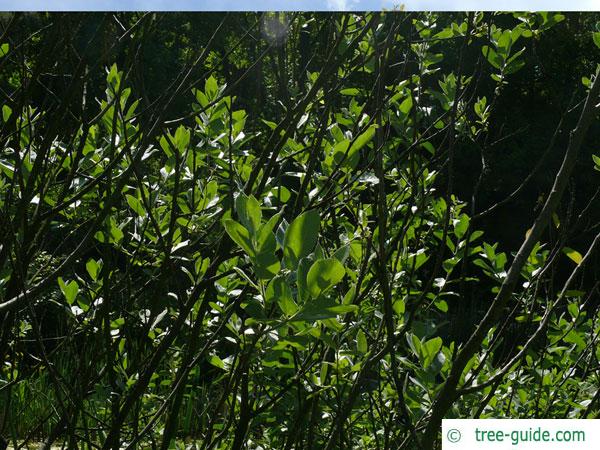Basisdaten
description:
The Hookers willow is native to the southwestern Canada to the north-western America. The willow grows in coastal areas often shrubby.
Tree profile
name botanical:
Salix hookeriana
family:
willow family (Salicaceae)
species:
deciduous tree
height:
up to 8 m (26 ft), often bushy
leaf:
The leaf is ovate, dark-green, glossy and firm. The leaf is up to 10 cm (3.9 in) in size. The leaf arrangement is alternate.
leaf shape:
ovoid
leaf margin:
smooth
leaf position:
alternate
fall foliage:
yellow
flowering:
March
blossom color:
white
blossom description:
The gray and white catkins of the willow are up to 9 cm long.
gender distribution:
monoecious
fruit:
Many small seeds that dissolve easily in the wind and germinate quickly on the ground.
branches:
The branches are brown and are perpendicular with bushy habit.
bark:
The bark is brown and furrowed.
root:
shallow-rooting
location:
Sun to partial shade
soil:
all soils, tolerant of salt
ph value:
acidic to alkaline
usage:
coastal vegetation














